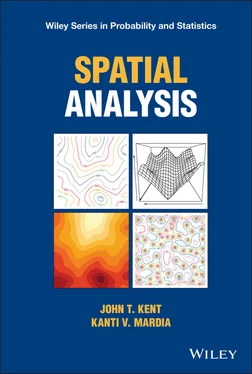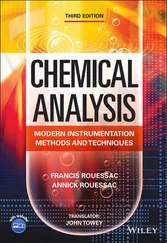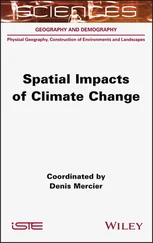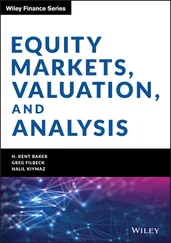Table 2.1Some radial covariance functions.
Table 2.2Special cases of the Matérn covariance function in (2.34) for half‐integer  with scale parameter
with scale parameter  .
.
Table 2.3Some examples of stationary covariance functions  on the circle, together with the terms
on the circle, together with the terms  in their Fourier series.
in their Fourier series.
Table 3.1Self‐similar random fields with spectral density  : some particular cases
: some particular cases
Table 5.1Parameter estimates (and standard errors) for the bauxite data using the Matérn model with a constant mean and with various choices for the index  .
.
Table 5.2Parameter estimates (and standard errors) for the elevation data using the Matérn model with a constant mean and with various choices for the index  .
.
Table 5.3Parameter estimates (with standard errors in parentheses) for Vecchia's composite likelihood in Example 5.7 for the synthetic Landsat data, using different sizes of neighborhood 
Table 7.1Notation used for kriging at the data sites  , and at the prediction and data sites
, and at the prediction and data sites  .
.
Table 7.2Various methods of determining the kriging predictor  , where
, where  can be defined in terms of transfer matrices by
can be defined in terms of transfer matrices by  or in terms of
or in terms of  by
by  .
.
Table 7.3Comparison between the terminology and notation of this book for simple kriging and Rasmussen and Williams (2006, pp. 13–17) for simple Bayesian kriging. The posterior mean and covariance function take the same form in both formulations, given by (7.61) and (7.62).
Table A.1Types of domain.
Table A.2Domains for Fourier transforms and inverse Fourier transforms in various settings.
Table A.3Three types of boundary condition for a one‐dimensional set of data,  .
.
Table A.4Some examples of Toeplitz, circulant, and folded circulant matrices  , respectively, for
, respectively, for  and
and  .
.
Table A.5First and second derivatives of  and
and  with respect to
with respect to  and
and  .
.
Spatial statistics is concerned with data collected at various spatial locations or sites, typically in a Euclidean space  . The important cases in practice are
. The important cases in practice are  , corresponding to the data on the line, in the plane, or in 3‐space, respectively. A common property of spatial data is “spatial continuity,” which means that measurements at nearby locations will tend to be more similar than measurements at distant locations. Spatial continuity can be modeled statistically using a covariance function of a stochastic process for which observations at nearby sites are more highly correlated than at distant sites. A stochastic process in space is also known as a random field.
, corresponding to the data on the line, in the plane, or in 3‐space, respectively. A common property of spatial data is “spatial continuity,” which means that measurements at nearby locations will tend to be more similar than measurements at distant locations. Spatial continuity can be modeled statistically using a covariance function of a stochastic process for which observations at nearby sites are more highly correlated than at distant sites. A stochastic process in space is also known as a random field.
One distinctive feature of spatial statistics, and related areas such as time series, is that there is typically just one realization of the stochastic process to analyze. Other branches of statistics often involve the analysis of independent replications of data.
The purpose of this book is to develop the statistical tools to analyze spatial data. The main emphasis in the book is on Gaussian processes. Here is a brief summary of the contents. A list of Notation and Terminology is given at the start for ease of reference. An introduction to the overall objectives of spatial analysis, together with some exploratory methods, is given in Chapter 1. Next is the specification of possible covariance functions ( Chapter 2for the stationary case and Chapter 3for the intrinsic case). It is helpful to distinguish discretely indexed, or lattice, processes from continuously indexed processes. In particular, for lattice processes, it is possible to specify a covariance function through an autoregressive model (the SAR and CAR models of Chapter 4), with specialized estimation procedures ( Chapter 6). Model fitting through maximum likelihood and related ideas for continuously indexed processes is covered in Chapter 5. An important use of spatial models is kriging, i.e. the prediction of the process at a collection of new sites, given the values of the process at a collection of training sites ( Chapter 7), and in particular the links to machine learning are explained. Some additional topics, for which there was not space for in the book, are summarized in Chapter 8. The technical mathematical tools have been collected in Appendix A for ease of reference. Appendix B contains a short historical review of the spatial linear model.
Читать дальше

 with scale parameter
with scale parameter  .
. on the circle, together with the terms
on the circle, together with the terms  in their Fourier series.
in their Fourier series. : some particular cases
: some particular cases .
. .
.
 , and at the prediction and data sites
, and at the prediction and data sites  .
. , where
, where  can be defined in terms of transfer matrices by
can be defined in terms of transfer matrices by  or in terms of
or in terms of  by
by  .
. .
. , respectively, for
, respectively, for  and
and  .
. and
and  with respect to
with respect to  and
and  .
. . The important cases in practice are
. The important cases in practice are  , corresponding to the data on the line, in the plane, or in 3‐space, respectively. A common property of spatial data is “spatial continuity,” which means that measurements at nearby locations will tend to be more similar than measurements at distant locations. Spatial continuity can be modeled statistically using a covariance function of a stochastic process for which observations at nearby sites are more highly correlated than at distant sites. A stochastic process in space is also known as a random field.
, corresponding to the data on the line, in the plane, or in 3‐space, respectively. A common property of spatial data is “spatial continuity,” which means that measurements at nearby locations will tend to be more similar than measurements at distant locations. Spatial continuity can be modeled statistically using a covariance function of a stochastic process for which observations at nearby sites are more highly correlated than at distant sites. A stochastic process in space is also known as a random field.










